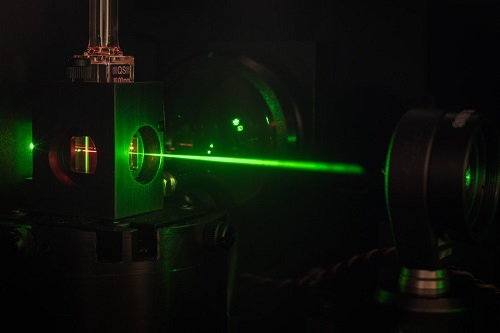
Chemical System Collects, Stores Solar Energy on Molecule for 14 Hours
Researchers from the Leibniz Institute of Photonic Technology (Leibniz IPHT) and Friedrich Schiller University have developed a copper complex-based chemical system for molecularly storing solar energy for at least 14 hours. The system decouples photochemical processes from the day-night cycle, bypassing a barrier that had previously made solar-powered photochemistry unsuitable for continuous industrial production processes.
Previous approaches to the storage of solar energy have been based on solid-state materials. Alternatively, the researchers generated reactive photoredox equivalents on a small molecule, enabling them to not only store the light energy for at least 14 hours, but to regenerate it when needed.

Measuring setup for the investigation of photophysical properties, of copper complexes, for example. Courtesy of Martin Schulz.
“The dependence on brightness and darkness has so far been a major hurdle when it comes to using solar-powered photochemistry for continuous industrial production processes,” said lead author Martin Schulz, a postdoctoral researcher at the University of Jena and Leibniz IPHT. “We assume that our results will open up new possibilities to research systems for the conversion and storage of solar energy as well as for photo(redox)catalysis.”
In the chemical system, the photosensitizer and the charge storage unit are located on the same molecule, eliminating the need for intermolecular charge transfer between a separate sensitizer and a charge storage unit. The system retains three-quarters of its charge capacity even after four cycles.
Rather than using rare and expensive materials such as ruthenium, which had used in previous approaches, the researchers used a copper complex that can be stored after photochemical charging and be used as a reagent in dark reactions, such as the reduction of oxygen.
The researchers developed the approach with partners from the University of Ulm, the Leibniz Institute for Solid State and Materials Research Dresden, and Dublin City University.
The research was published in the Journal of the American Chemical Society (www.doi.org/10.1021/jacs.0c03779).
Published: September 2020